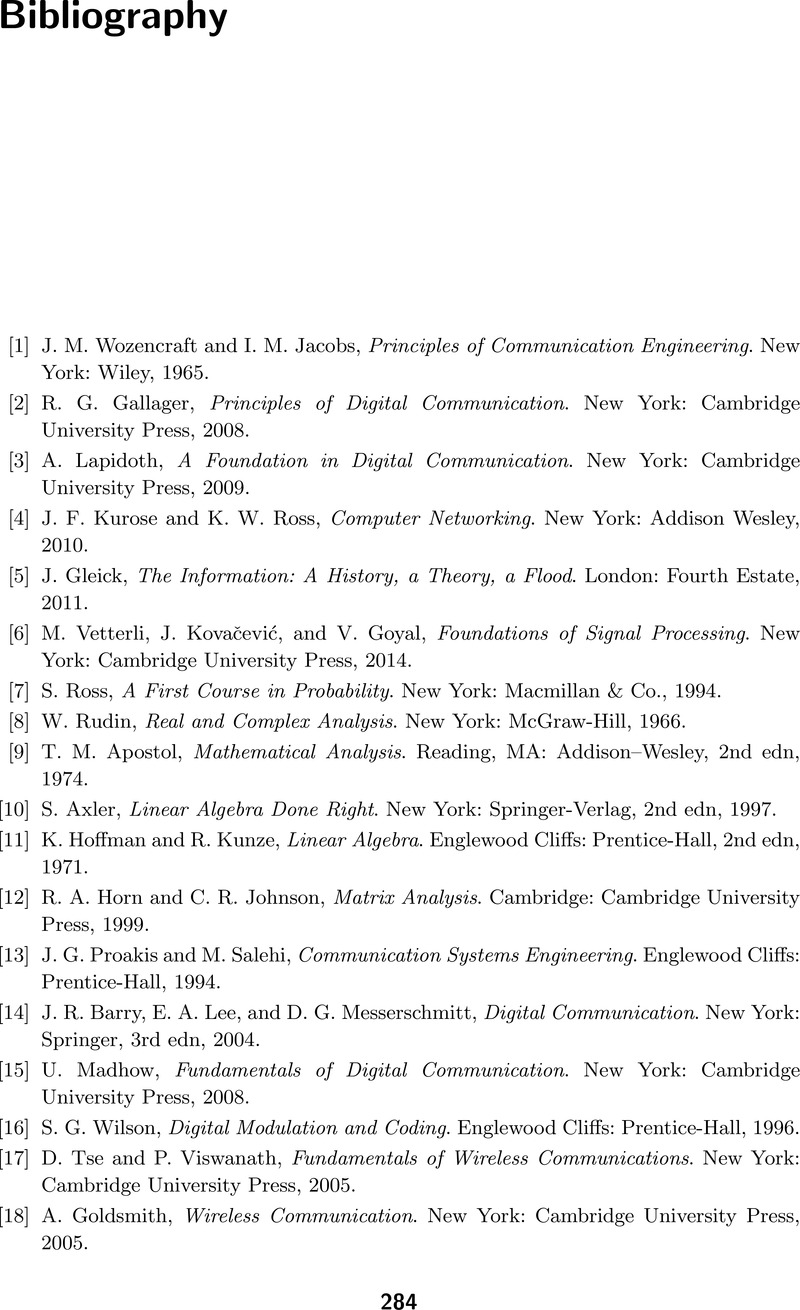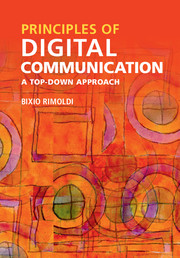Book contents
- Frontmatter
- Dedication
- Contents
- Preface
- Acknowledgments
- List of symbols
- List of abbreviations
- 1 Introduction and objectives
- 2 Receiver design for discrete-time observations: First layer
- 3 Receiver design for the continuous-time AWGN channel: Second layer
- 4 Signal design trade-offs
- 5 Symbol-by-symbol on a pulse train: Second layer revisited
- 6 Convolutional coding and Viterbi decoding: First layer revisited
- 7 Passband communication via up/down conversion: Third layer
- Reference
- Index
- References
Reference
Published online by Cambridge University Press: 05 January 2016
- Frontmatter
- Dedication
- Contents
- Preface
- Acknowledgments
- List of symbols
- List of abbreviations
- 1 Introduction and objectives
- 2 Receiver design for discrete-time observations: First layer
- 3 Receiver design for the continuous-time AWGN channel: Second layer
- 4 Signal design trade-offs
- 5 Symbol-by-symbol on a pulse train: Second layer revisited
- 6 Convolutional coding and Viterbi decoding: First layer revisited
- 7 Passband communication via up/down conversion: Third layer
- Reference
- Index
- References
Summary

Information
- Type
- Chapter
- Information
- Principles of Digital CommunicationA Top-Down Approach, pp. 284 - 285Publisher: Cambridge University PressPrint publication year: 2016
